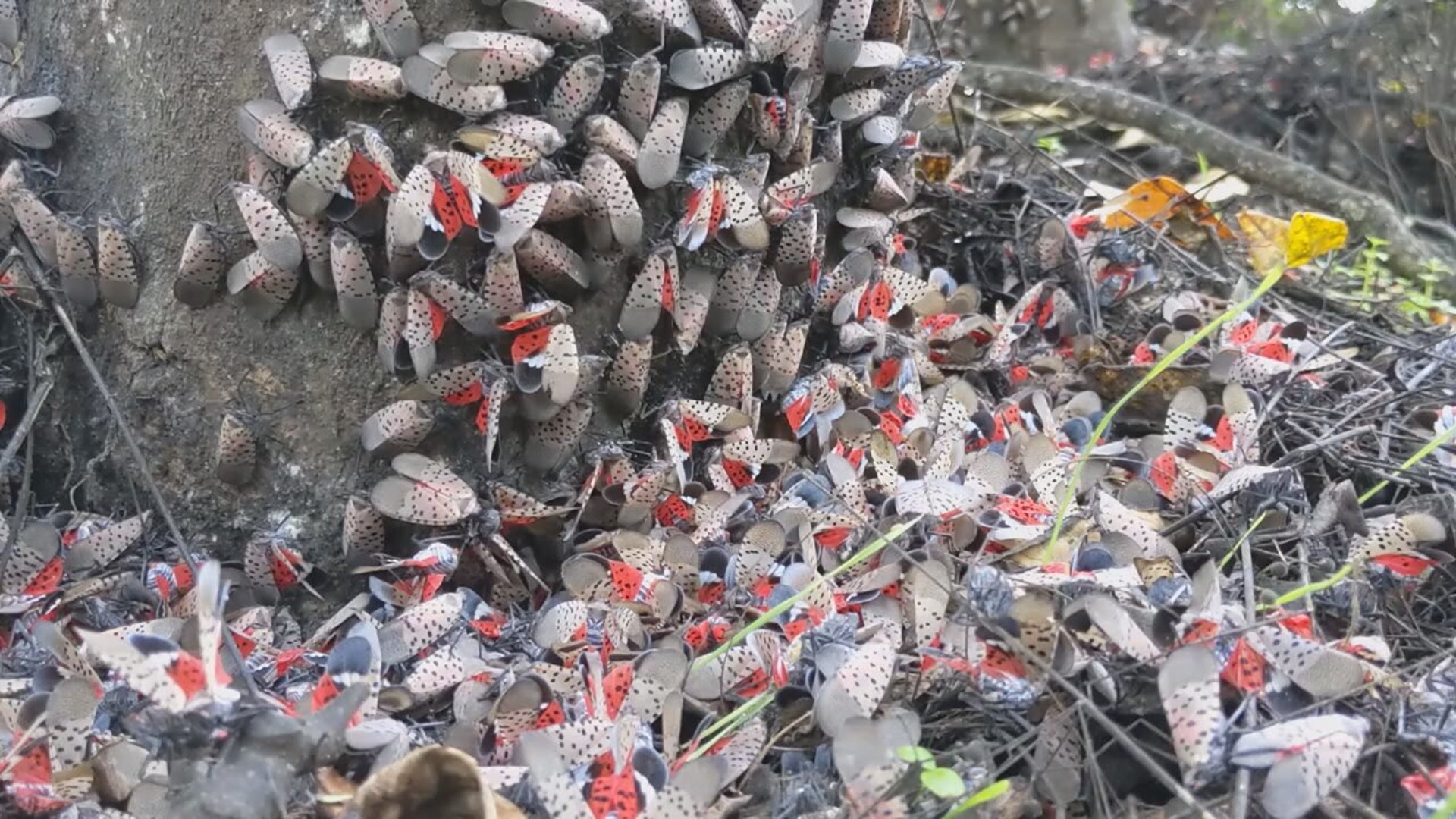PENNSYLVANIA, USA — Across south-central Pennsylvania, some people have spotted them, others are still wondering why they aren’t seeing the same droves of lanternflies they saw just one year ago.
"The population is not gone by any sense of the imagination, but it is not as big as it has been," said Brian Walsh, an educator and spotted lanternfly researcher at Penn State Extension. "It’s really a matter of real estate. Where you are will have an impact on how many you are seeing."
Walsh says spotted lanternflies are declining in many localized areas across south central Pa. However, it is still a problem that persists on a bigger scale.
"When we think about these populations, it’s not just your area. Overall, the population is still growing because it is now spreading out into other states," said Walsh. "However, in individual regions, we do see declines."
Experts add it will not take much to see lanternflies return to these localized areas in big numbers. They urge people to stay vigilant.
"It just takes one lanternfly laying eggs one season to create a whole new population the next season," said Shannon Powers, the Pennsylvania Department of Agriculture's press secretary.
"It’s not uncommon to see a late season influx of adults into a small area, so on any given property, you still have to remain vigilant," added Walsh. "It’s not the time to let down your guard."
Despite population declines in some localized areas, experts believe the spotted lanternfly problem in Pennsylvania is here to stay.
"The point of possible eradication is probably long gone," said Walsh. "Right now, we are learning to manage and mitigate the damage. I think [that] is a much more realistic goal than eradication at this point. We can mitigate the damage to the stakeholders that are most impacted by this bug."
In the most recent budget passed by the state legislature as part of an emergency agriculture response fund, $3 million is allocated to spotted lanternfly management measures.
"It’s going to be continued refinement of this management and it’s probably going to be persisting long into the future," said Walsh. "The goal is to get this to a point where it is manageable. Where we have minimal input to mitigate the damages that are caused by these insects."
A quarantine checklist has been posted by the Pennsylvania Department of Agriculture with advice on how to stop the spread of the invasive species across the Commonwealth.

